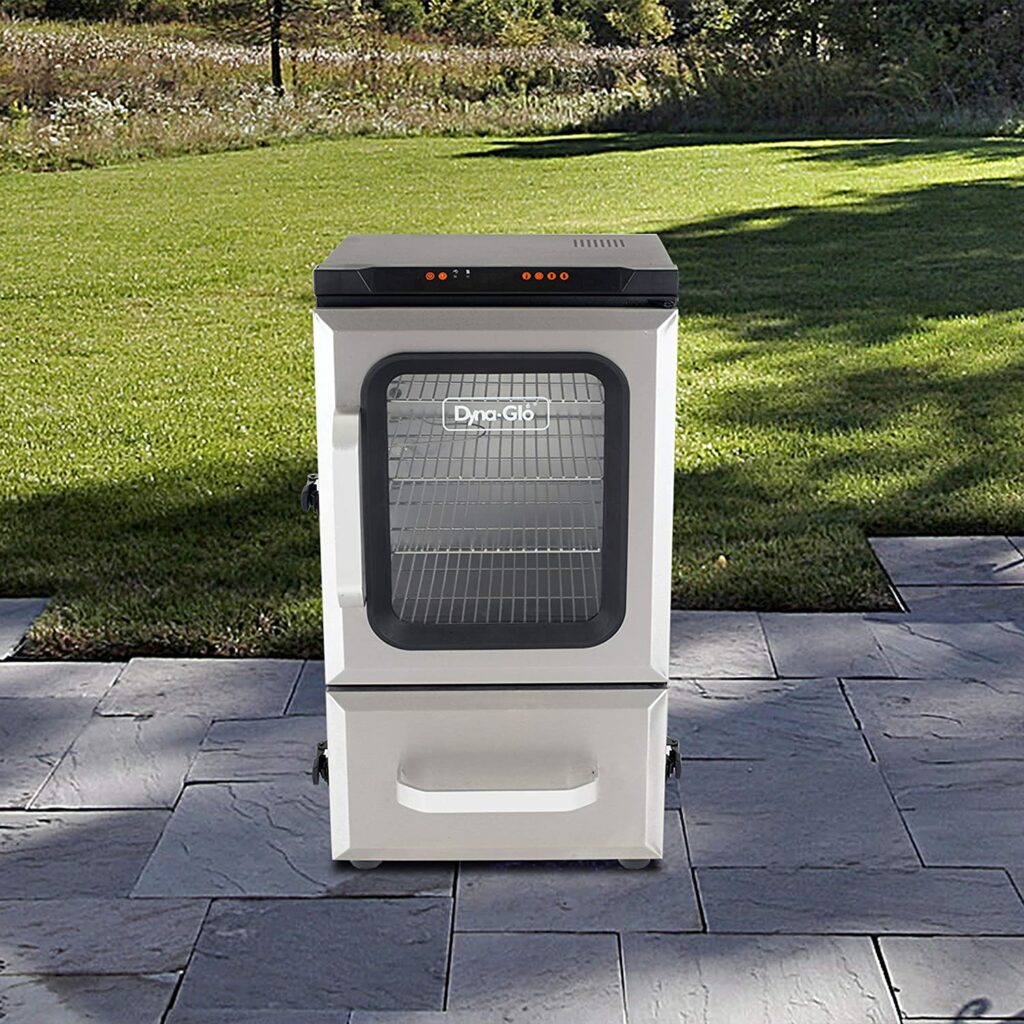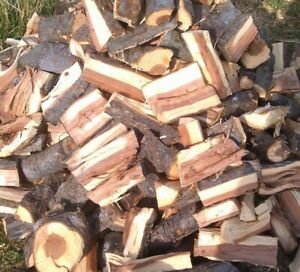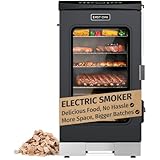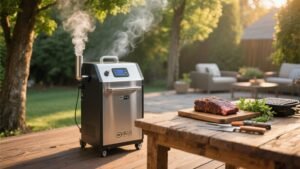Table of Contents
ToggleIntroduction
Are you tired of serving the same old grilled meats at your backyard BBQ parties? If so, it’s time to up your grilling game and start smoking meat!
Smoking meat is a popular technique that infuses flavor into meats while also keeping them tender and juicy. In this article, we will explore the different tools needed for smoking meat and how they can enhance your grilling experience.
Explanation of Smoking Meat
Smoking meat is the process of cooking meat at low temperatures over an extended period with the use of smoke. Smoke is created by burning wood chips or chunks in a smoker, which infuses flavors into the meat. This slow cooking process causes the collagen in tough cuts of meat to break down, resulting in tender and flavorful meats.
The benefits of smoking meat are many. Smoked meats have a unique flavor profile that cannot be achieved with traditional grilling methods.
The smoke from wood chips not only adds flavor but also acts as a natural preservative, extending the shelf life of smoked meats. Additionally, smoking allows you to cook tougher cuts of meat that would otherwise be too chewy or dry if grilled using traditional methods.
Benefits of Smoking Meat
Smoking adds depth and complexity to meats that cannot be achieved through traditional grilling methods alone. Meats take on distinctive flavors based on the type of wood used for smoking.
For example, mesquite wood will give beef or pork a bold, earthy flavor while applewood provides a sweet mild taste perfect for poultry and fish. Another benefit is that smoked meats have an extended shelf life due to the natural preservatives found in smoked wood such as vinegar or creosote.
Smokers allow us to cook larger portions at one time without having to worry about uneven cooking. Smoke can permeate even the thickest cuts of meat, ensuring that the entire piece is cooked evenly.
Smoking is a great way to enhance your grilling experience and impress your friends and family with deliciously tender and flavorful meats. In the next section, we will explore the different types of smokers available on the market today.
Types of Smokers
When it comes to smoking meat, there are three main types of smokers to choose from: charcoal, electric, and pellet. Each type has its unique advantages and disadvantages, so it’s essential to consider your preferences when choosing the perfect smoker for you.
Charcoal Smokers
Charcoal smokers are the most traditional way of smoking meat and are often preferred by experienced pitmasters for their authentic smoky flavor. These smokers use charcoal as their primary heat source, which requires more effort than other types but can result in deliciously flavored meats. The downside of using a charcoal smoker is that they require a lot of attention and monitoring.
The temperature can fluctuate rapidly, making it challenging to maintain the ideal cooking temperature throughout the smoking process. However, if you’re willing to put in the effort and don’t mind getting your hands dirty, then a charcoal smoker might be the perfect fit for you!
Electric Smokers

Electric smokers are an excellent option if convenience is a top priority for you when it comes to smoking meat. These smokers use electricity as their primary heat source and are incredibly easy to operate – simply plug them into an electric outlet, set your desired temperature, and let them do all the work! But there’s always a catch!
Electric smokers aren’t ideal if you’re looking for that authentic smoky flavor because they don’t produce as much smoke as other types of smokers. They also tend to be pricier than charcoal or pellet smokers.
Pellet Smokers
Pellet smokers are becoming increasingly popular due to their convenience and ease-of-use while still producing deliciously smoked meats. They use compressed wood pellets as fuel instead of charcoal or electricity.
The benefit of using pellet smokers is that they allow for more precise temperature control than with other types because they have digital controls that allow you to set the exact temperature you want. They also produce a highly desirable smoky flavor, making them an excellent choice for those who want convenience and flavor.
However, pellet smokers are more expensive than charcoal smokers and require access to an electrical outlet to run the auger that feeds the pellets into the firebox. Overall, choosing the right smoker is all about finding which type works best for your lifestyle and smoking preferences!
Types of Wood for Smoking Meat
Choosing the right wood for your smoker can make a huge difference in the flavor of your meat. There are many different types of wood to choose from, each with its own unique flavor profile. Here are a few of the most popular woods used for smoking meat:
Hickory
Hickory is one of the most popular woods used for smoking meat. It has a strong, smoky flavor that pairs well with beef, pork, and poultry. Hickory also burns hot and long, making it a great choice for larger cuts of meat.
Mesquite
Mesquite is another popular wood used for smoking meat. It has a strong, earthy flavor that pairs well with beef and wild game. Mesquite burns hot and fast, so it’s best to use it in small quantities or to mix it with other woods.
Apple

Apple wood has a sweet, fruity flavor that pairs well with poultry and pork. It’s not as strong as hickory or mesquite, so it’s best used in combination with other woods.
How to Use Wood Chips and Chunks
Now that you’ve chosen your wood, it’s time to add it to your smoker. Here’s how:
Soak Your Wood Chips or Chunks
Before you add your wood chips or chunks to the smoker, you’ll want to soak them in water for at least 30 minutes (or up to 24 hours). Soaking helps prevent the wood from burning too quickly and producing too much smoke.
Add Your Wood to the Smoker
Once your wood is soaked, add it directly to your smoker (or put it in a smoking box if using an electric or gas smoker). Make sure you spread the chips or chunks evenly throughout the smoker to ensure even smoke distribution.
Monitor Your Smoke
As your meat cooks, you’ll want to keep an eye on the smoke. Too much smoke can overpower the flavor of your meat, while too little smoke can leave it tasting bland. It’s all about finding the right balance.
Keep an eye on your wood chips or chunks, adding more as needed to maintain a consistent level of smoke. And don’t forget to enjoy the aromas coming from your smoker – they’re a big part of what makes smoking meat so enjoyable!
The Importance of Using a Thermometer When Smoking Meat
When smoking meat, it’s important to have the right temperature to ensure that your meats are cooked perfectly. This is where a thermometer comes in handy. Using a thermometer can help you accurately monitor the temperature of your meat and maintain consistent heat levels throughout the smoking process.
This not only ensures that your meat is thoroughly cooked, but also helps prevent foodborne illnesses. Not all thermometers are created equal when it comes to smoking meat.
For example, oven thermometers may not be accurate enough for use on a smoker due to the wide range of temperatures that smokers operate at. That’s why it’s important to choose a thermometer specifically designed for use with smoking meats.
Types of Thermometers for Smoking Meat
There are several types of thermometers available for use when smoking meat. One popular type is an instant-read thermometer which provides quick and accurate readings by inserting the probe into the thickest part of the meat. Digital probe thermometers are another popular option that allows you to monitor temperatures continuously throughout the cooking process without having to open up your smoker.
Wireless remote thermometers are great for those who want to keep an eye on their meat from afar or if they’re multitasking while preparing their meal. These come with an external receiver that displays real-time temperature readings from inside your smoker.
There are dual-probe thermometers which allow you to monitor both the internal temperature of your meat as well as the ambient temperature inside your smoker simultaneously. This can be particularly useful when smoking larger cuts of meat or if you’re trying out new recipes and need more precise control over heat levels.
Using a thermometer when smoking meats can make a huge difference in ensuring perfectly cooked meals every time. With so many options available on the market today, there’s sure to be one that fits your needs and budget!
Accessories for Smoking Meat
When it comes to smoking meat, having the right tools can make all the difference in producing a delicious and perfectly cooked meal. While smokers and wood chips are essential, there are additional accessories that can elevate your smoking game even further. In this section, we’ll discuss two popular accessories: the meat injector and the smoking box.
The Meat Injector
A meat injector is a tool used to inject marinades or seasonings directly into the meat. This helps to infuse flavor throughout the entire piece of meat instead of just on the surface.
To use a meat injector, first prepare your marinade or seasoning mixture. Fill up the syringe with your mixture and insert it into various points of your meat.
Be sure to inject slowly and evenly in order to avoid over-injecting in one spot. The benefits of using a meat injector are numerous.
By injecting flavors directly into the center of your meats, you can ensure that every bite is packed with flavor. This method also allows you to use less seasoning overall since each injection point will distribute flavor throughout the entire cut of meat.
The Smoking Box
A smoking box is an accessory that can be used in conjunction with gas grills or charcoal grills to add extra smoky flavor to your meats. It’s essentially a small metal box that holds wood chips and sits on top of your grill grates next to your food. To use a smoking box, fill it up with wood chips according to manufacturer instructions, then place it directly on top of your grill grates next to whatever you’re cooking.
Not only does this accessory add extra smoky flavor without requiring an actual smoker, but it also allows you more control over how much smoke you’re getting since you can easily adjust how much wood you add to the box. Smoking boxes are also great for those with smaller outdoor spaces who may not have room for a full-sized smoker.
Using accessories such as a meat injector or smoking box can be incredibly helpful in creating perfectly cooked and flavorful meats. Experimenting with different tools can also give you new ideas and techniques to incorporate into your smoking routine.
Tips for successful smoked meats
How to prepare the meats before they are smoked
Before smoking any meat, it is important to properly prepare it. One of the first things to do is to trim off any excess fat, as it can cause flare-ups and negatively affect the taste of your final product. You can also choose to marinate or season your meat prior to smoking for added flavor.
For tougher cuts of meat, consider using a meat tenderizer or marinade injector. It’s also important to let your meat come up to room temperature before smoking.
This ensures that the internal temperature is evenly distributed and helps with even cooking. Some people prefer putting salt on the outside of their meats before they smoke them, which can help not only with flavor but also with forming a nice crust on the outside.
How long should you smoke the meats?
The amount of time you should smoke your meats depends on what type and size of cut you are working with. As a general rule, most meats will need between 1-6 hours in a smoker at 225°F to reach their desired level of doneness.
For example, chicken breasts may only take 1-2 hours while larger cuts like brisket or pork shoulder may take upwards of 8-12 hours. It’s important not to rush this process as slow-cooking allows for all the flavors and juices from within the meat to be released and absorbed back into it.
How often should you check on the meats?
Checking on your meat too frequently during smoking can cause a loss in heat or smoke which could potentially impact how well your final product turns out. However, checking too infrequently means that there could be issues that arise without being caught early enough. As a general guideline, aim for checking on your meat every hour or so after the first hour of smoking has elapsed.
This allows you to add more wood or charcoal if necessary, as well as adjust other factors like temperature or humidity based on how your meat is progressing. Preparing your meat properly prior to smoking it can have a big impact on its overall flavor and tenderness.
Smoking times will vary depending on what type of cut you are working with, although slow and low cooking generally yields the best results. Checking your meat periodically throughout the smoking process ensures that any issues can be addressed in a timely manner without risking a loss in quality.
The Last Puff
When you are smoking meat, the road to flavor perfection is paved with the right tools. From choosing your smoker to picking the right wood and accessories, every step is important.
Using a thermometer might seem like a small detail, but it can make all the difference in getting your meat cooked perfectly. Invest in a good quality thermometer, and you’ll be able to cook your meat to perfection every time.
Remember that smoking is not an exact science. You need to adjust your cooking times and temperatures based on factors such as weather, altitude and humidity.
Don’t be afraid to experiment with different types of wood chips or combinations of flavors until you find what works for you and your taste buds. Smoking meat is an art form that requires patience, skill and good equipment.
But once you’ve mastered it, there’s nothing quite like the taste of juicy smoked ribs or tender brisket. So fire up the smoker, grab some wood chips and get ready for a smokin’ good time!







